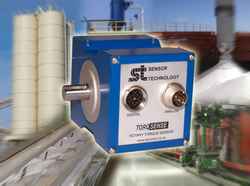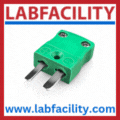
Posted to News on 20th Aug 2014, 13:12
Non-contact torque monitoring brings benefits to ship unloaders
A ship at sea is earning its owners money; a ship in port is costing its owners money. Rapid loading and unloading are therefore critical to the success of a shipping company, hence dockside technology continues to develop to provide more speed and efficiency.

Unloading dry bulk cargo from ships would be slow, laborious and potentially dangerous if it had to be done manually. But for many years the process has been automated and ship unloaders are a well-developed technology that work continuously to transfer grains, minerals and other dry bulk materials reliably and efficiently from ship to shore.
Unloaders come in a number of different designs, each suited to different materials. The core technologies include bucket wheels, flighted vertical conveyors, augers, horizontal belt conveyors and pneumatic systems. The mechanical principles of each of these are self-explanatory, but it is essential that control and monitoring is maintained at all times to ensure trouble-free operation and to calculate the weight of cargo being unloaded.
An emerging technology that is increasingly being integrated into unloaders is wireless, non-contact digital torque monitoring. This measures the work being done by the motors and drive shafts of the unloaders and the data is automatically and instantly converted into cargo weight figures.
Unloaders need to run at optimum speed to minimise ship turnaround times, while also controlling the rate of delivery of materials to the dockside facilities. Real-time data from the unloaders is collected by having sensors monitoring the critical variables - in this case the torque on the drive shafts, the speed of the motors and the drive power - and fed back to the control system.
However, torque data can be hard to collect, with traditional technologies introducing as many problems as they solve. Because the shaft is rotating, wires attached to it would wind up and snap, so a special way of monitoring it is required. The usual approach is to use slip rings, but these are expensive, difficult to set up and far too delicate in use for dockside applications.
Now, with over 20 years of research and development into digital non-contact torque monitoring, Sensor Technology UK Ltd is at the forefront of an important enabling technology. Mark Ingham, one of the company's managers, states: "Our TorqSense transducer is based on the patented technology of measuring the resonant frequency change of surface acoustic waves (SAWs) generated by rotating shafts. It is a proven technology that has solved torque measuring challenges in a host of industries."
SAW detectors
TorqSense torque sensors use two tiny SAW detectors made of ceramic piezoelectric material containing frequency resonating combs. This article explains how Surface Acoustic Wave technology works for non-contact torque measurement.
Mark Ingham continues: "TorqSense measurement, together with the digital outputs it offers, is often the only practical way to measure torque in an industrial environment. And once you are collecting torque data this way, you are well on the way to sophisticated real-time control of complex processes."
Borne out of the need to solve a particular challenge in the automotive industry, TorqSense is now widely used throughout a range of industries including many liquid-handling applications, in mixers, in the nuclear industry, for testing aerospace components, and for running drug trials. It is applicable to all sizes of torque measurement tasks, from dispensing active pharmaceutical ingredients, through stirring industrial quantities of cook-chilled curries, to modelling storm and flood water flows.
This innovative method of measuring torque is bringing distinct advantages to handling dry bulk products. A process that was once regarded as very difficult to monitor can now reap the same benefits as many other industrial processes, enabling operations to be optimised for high levels of productivity with low cost.
Sensor Technology has also adapted the SAW technique for use with straight-line load monitoring, such as is required by cranes and hoists as they lift cargo to and from ships. This means that all cargo-handling techniques used in any given situation can be monitored by the same system, which will lead to significant savings in management time and costs as two or more reports do not have to be integrated.
Mark Ingham concludes: "The modern world requires rapid and efficient transportation of goods from continent to continent. As well as speed of handling, accurate records are also essential. TorqSense and its sister product LoadSense allow real time data to be collected, constantly updated and instantly converted into the critical information required for efficient logistics."
To learn more about TorqSense in dockside technology and other applications, go to www.sensors.co.uk/mbn.
Apollo Park, Ironstone Lane
Wroxton
OX15 6AY
UNITED KINGDOM
+44 (0)1869 238400





